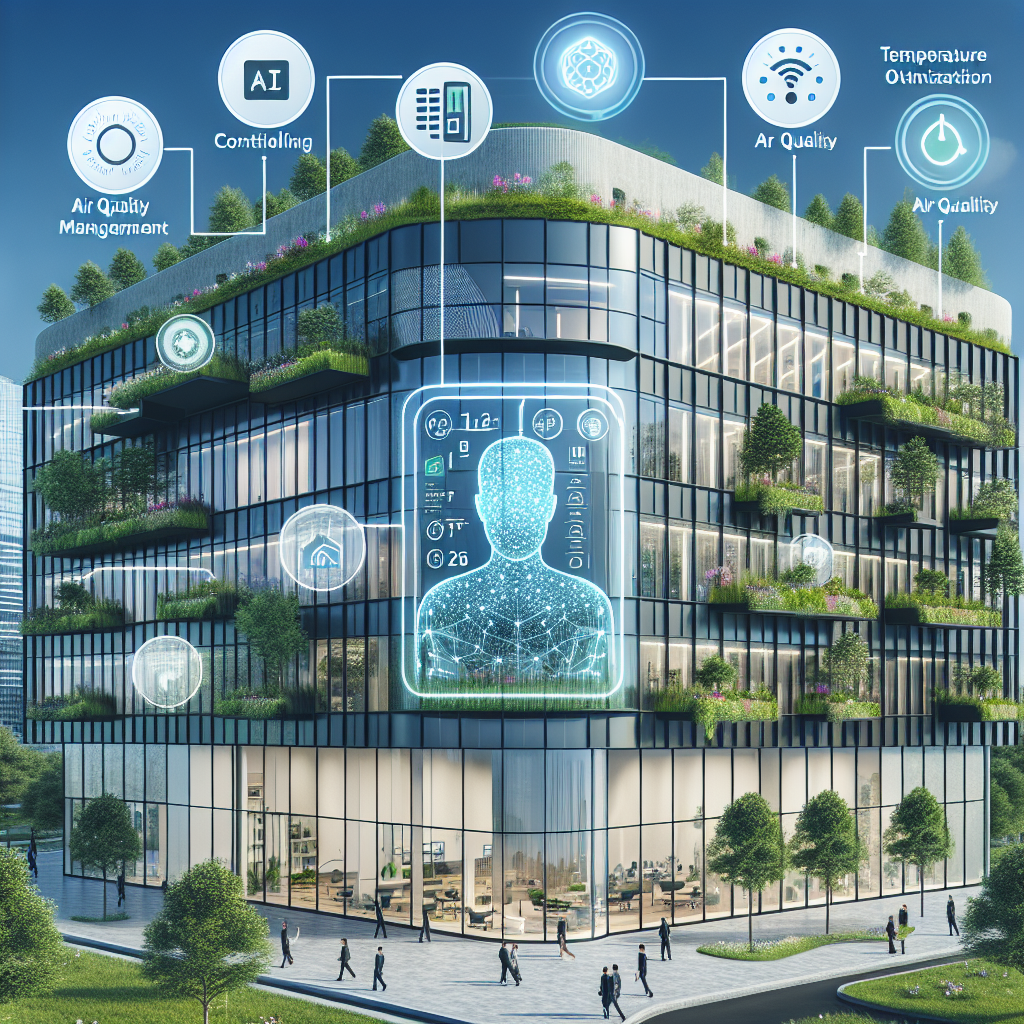In recent years, the integration of artificial intelligence (AI) technology into building management systems has revolutionized the way buildings are operated and maintained. One of the key areas where AI has made a significant impact is in building comfort optimization. By leveraging AI algorithms and machine learning techniques, building managers can now achieve optimal comfort levels for occupants while also improving energy efficiency and reducing operational costs. In this article, we will explore the benefits of AI-driven building comfort optimization and how it is transforming the way buildings are managed.
One of the primary benefits of AI-driven building comfort optimization is the ability to create personalized comfort settings for occupants. Traditional building management systems rely on fixed setpoints for temperature, humidity, and ventilation, which may not always align with the preferences of individual occupants. With AI, building managers can collect and analyze data on occupant behavior, preferences, and comfort levels to create customized comfort profiles for each individual or group of occupants. This allows for a more tailored and responsive approach to building comfort, leading to higher occupant satisfaction and productivity.
Another key benefit of AI-driven building comfort optimization is the ability to adapt to changing environmental conditions in real-time. AI algorithms can continuously monitor and analyze data from sensors, weather forecasts, and building systems to make automatic adjustments to HVAC, lighting, and other comfort systems. For example, if a sudden temperature spike is detected outside, the AI system can preemptively adjust the cooling system to maintain a comfortable indoor temperature without wasting energy. This dynamic and adaptive approach to building comfort optimization ensures that occupants are always kept comfortable while also maximizing energy efficiency.
AI-driven building comfort optimization also plays a crucial role in improving energy efficiency and reducing operational costs. By optimizing comfort settings based on occupancy patterns, weather conditions, and other factors, building managers can significantly reduce energy consumption while maintaining occupant comfort. AI algorithms can identify and eliminate energy waste, such as overheating or overcooling of spaces, inefficient scheduling of HVAC systems, and unnecessary lighting usage. This not only lowers utility bills but also helps buildings achieve sustainability goals and reduce their carbon footprint.
In addition to improving comfort and reducing energy costs, AI-driven building comfort optimization can also enhance indoor air quality and occupant health. AI algorithms can monitor air quality parameters such as CO2 levels, humidity, and particulate matter and make adjustments to ventilation systems to ensure a healthy indoor environment. By maintaining optimal indoor air quality, buildings can reduce the risk of health issues such as allergies, asthma, and respiratory infections among occupants. This not only benefits the health and well-being of occupants but also enhances the overall productivity and performance of building users.
Furthermore, AI-driven building comfort optimization can streamline maintenance operations and improve the reliability of building systems. By analyzing data from sensors and equipment, AI algorithms can detect potential issues or malfunctions in building systems before they result in costly breakdowns or downtime. This proactive approach to maintenance allows building managers to schedule timely repairs and replacements, reducing the risk of emergency repairs and extending the lifespan of building systems. Additionally, AI-driven predictive maintenance can help optimize the performance of equipment, reduce energy consumption, and minimize operational disruptions.
Overall, the benefits of AI-driven building comfort optimization are vast and multifaceted. From personalized comfort settings and energy efficiency to indoor air quality and maintenance optimization, AI technology is transforming the way buildings are managed and operated. As the demand for smart and sustainable buildings continues to grow, AI-driven building comfort optimization will play a crucial role in shaping the future of the built environment.
FAQs:
Q: How does AI-driven building comfort optimization differ from traditional building management systems?
A: Traditional building management systems rely on fixed setpoints for temperature, humidity, and ventilation, whereas AI-driven systems use algorithms and machine learning techniques to create personalized comfort settings based on occupant behavior and preferences. AI-driven systems also adapt to changing environmental conditions in real-time and optimize energy efficiency, indoor air quality, and maintenance operations.
Q: What are the key benefits of AI-driven building comfort optimization?
A: The key benefits of AI-driven building comfort optimization include personalized comfort settings for occupants, energy efficiency, improved indoor air quality, streamlined maintenance operations, and enhanced occupant health and productivity. AI technology enables building managers to achieve optimal comfort levels while also reducing operational costs and environmental impact.
Q: How can building managers implement AI-driven building comfort optimization in their facilities?
A: Building managers can implement AI-driven building comfort optimization by integrating AI algorithms and machine learning models into their existing building management systems. This may require upgrading sensors, data analytics tools, and control systems to support AI technology. Building managers can also work with AI solution providers and consultants to develop customized AI solutions for their specific building needs.
Q: What are some examples of AI-driven building comfort optimization in practice?
A: Some examples of AI-driven building comfort optimization include predictive maintenance of HVAC systems, personalized temperature settings for individual occupants, real-time adjustments to lighting and ventilation based on occupancy patterns, and automatic optimization of energy usage during peak demand periods. AI technology is being increasingly used in commercial buildings, offices, hospitals, schools, and other facilities to improve comfort, efficiency, and sustainability.

